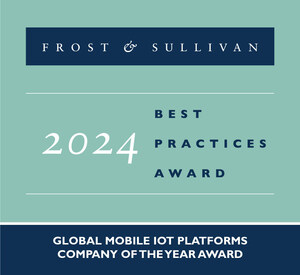Residential Customers Increasingly Adopt Demand Response Programs, According to Frost & Sullivan End-User Survey
MOUNTAIN VIEW, Calif., April 12 /PRNewswire/ -- Frost & Sullivan released its end-user survey, Smart Grid Market - A Customer Perspective on Demand Response, which examines the motivations and probability of residential customers adopting demand response programs.
(Logo: http://www.newscom.com/cgi-bin/prnh/20081117/FSLOGO)
Demand response is defined as a load power management program offered and controlled by either electric utilities or curtailment service providers. Demand response is considered an essential component of smart grid rollout, as it is expected to reduce overall construction of peak generation plants, as well as improve overall power quality and the environment.
The survey of 600 U.S. residential homes reveals that close to 45 percent of residents report an increase in their electricity bill, due in large part to an increase in electricity consumption. Close to 60 percent of residential energy consumers are willing to change their electricity use to save money, though, many seek savings in return for signing on to a demand response program.
Reasons for the search for demand response programs include past energy problems, the level of environmental awareness, and customer location, among others.
Demand response programs have been segmented by The Federal Energy Regulatory Commission (FERC), consisting of the following:
- Dynamic pricing without enabling technology
- Dynamic pricing with enabling technology
- Direct load
"Customer awareness of smart grids appears moderately high, though awareness does not likely stem from the direct efforts of electric utility companies," states Frost & Sullivan Senior Energy Consultant Farah Saeed. "Only 16 percent of all surveyed residential electric customers are aware of any effort by their electric utility company to introduce smart grid technology into their community."
If you are interested in more information on this survey, please send an e-mail to Johanna Haynes, Corporate Communications, at [email protected], with your full name, company name, title, telephone number, company e-mail address, company website, city, state and country
In addition, the survey recognizes a high probability of customers signing up for demand response if the customer has access to an energy management system in the form of smart appliances. The first group of smart home appliances will consist of washers and heaters. These appliances will be able to operate on a variety of modes and will be connected to the smart grid, allowing them to either shut-off or go into energy saving mode during peak power periods.
The survey illustrates that over half of the respondents are either likely or somewhat likely to adopt smart appliances (59 percent). However, the majority plan to wait until their appliances come due for replacement (75 percent), rather than adopting smart appliances right away. Furthermore, these potential smart appliance adopters seek rapid payback on these appliances: 79 percent want payback in two years or less, with only 7 percent not insisting on a payback at all.
About Frost & Sullivan
Frost & Sullivan, the Growth Partnership Company, enables clients to accelerate growth and achieve best-in-class positions in growth, innovation and leadership. The company's Growth Partnership Service provides the CEO and the CEO's Growth Team with disciplined research and best-practice models to drive the generation, evaluation, and implementation of powerful growth strategies. Frost & Sullivan leverages over 45 years of experience in partnering with Global 1000 companies, emerging businesses and the investment community from 40 offices on six continents. To join our Growth Partnership, please visit http://www.frost.com.
Smart Grid Market - A Customer Perspective on Demand Response
N72B
Contact: |
|
Johanna Haynes |
|
Corporate Communications – North America |
|
P: 210.247.3870 |
|
F: 210.348.1003 |
|
SOURCE Frost & Sullivan
WANT YOUR COMPANY'S NEWS FEATURED ON PRNEWSWIRE.COM?
Newsrooms &
Influencers
Digital Media
Outlets
Journalists
Opted In






Share this article